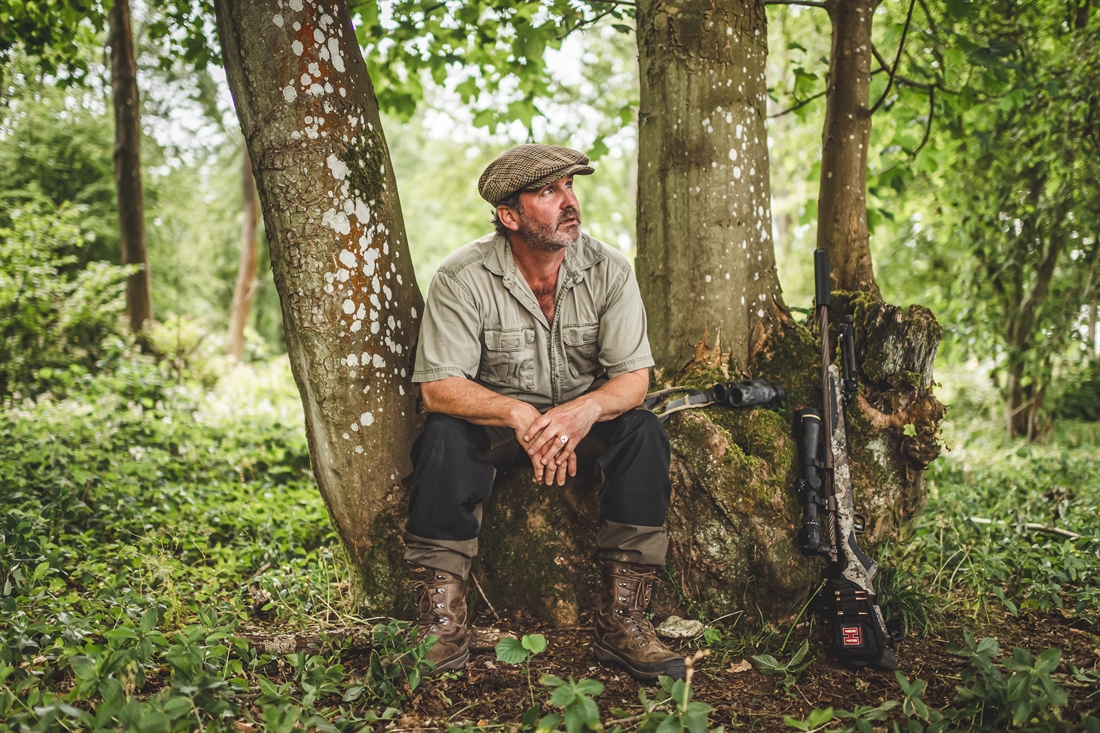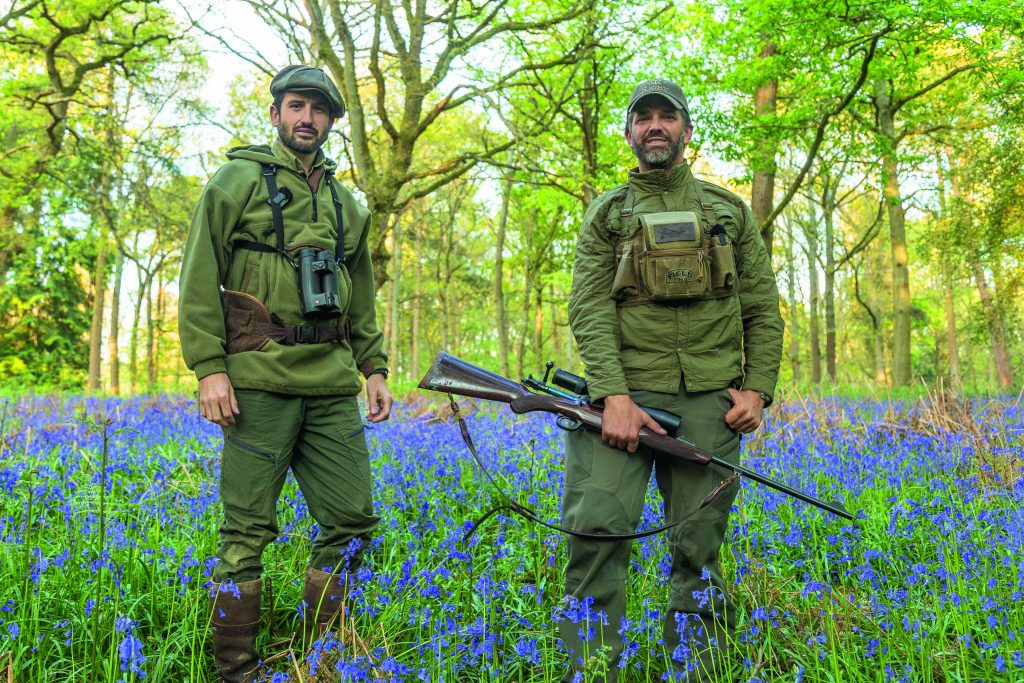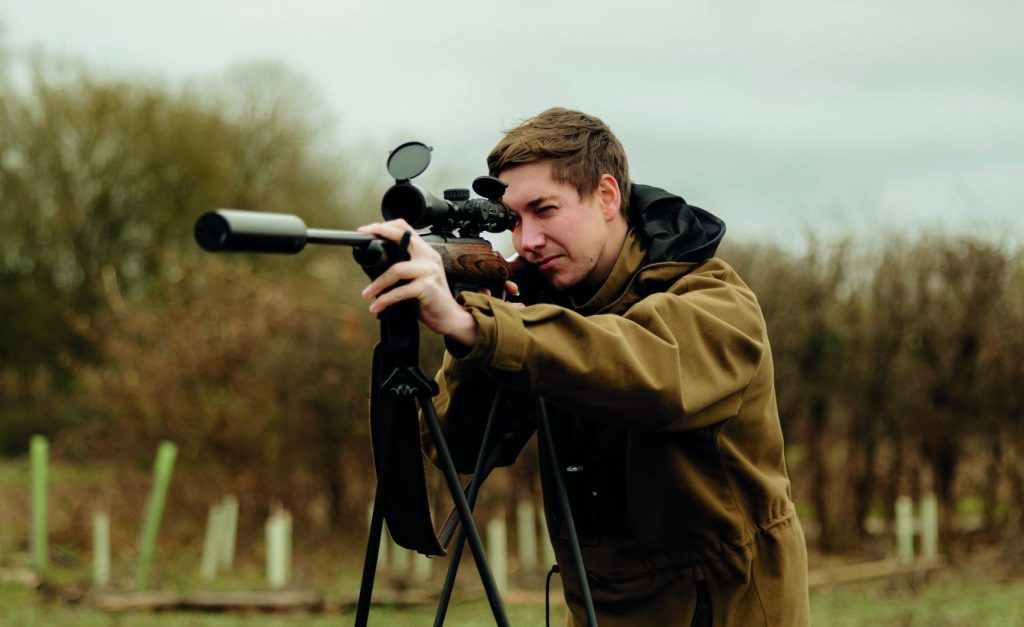The trouble with deer
Restauranteur, deer manager and venison retailer, Mike Robinson, explains the pandemic’s impact on British wild deer.

The ramifications of the Covid pandemic have yet to be fully seen, but on one level we are already seeing a significant environmental impact. In this article I am going to look at the issues that an increase in wild deer numbers will have on the UK and what can be done about it. I would say that these views are my own and the views of experts in their fields, but as is always the case in UK deer management, many will disagree!
I approach deer from an unusual viewpoint. I am an end user of wild venison, in my restaurants, but also a primary producer, in that I am so passionate about the resource, I manage quite large areas of land for deer, and have my own FSA processing facility – Owl Barn Larder in the Cotswolds. I also sell wild venison to the public via Deer Box. I also employ a full-time deer manager to help manage the land, which is fairly unique in England.
As a restaurateur, I was forced to stop selling any produce at all last March, and indeed have had my three restaurants closed for nine months in all at the time of writing. During this time my restaurants would have sold over 300 fallow deer and numerous muntjac, as well as around 3,000 roe shoulders.
Essentially the issue is that if you do not have a market for venison, the game dealers will not buy the same numbers (they are middlemen after all who require an end market as well as a supply).
Deerstalkers in the UK are always quick to blame the game dealers for low prices or a refusal to buy but in reality the dealers can do nothing – they are driven by market forces.
Alan Hayward, who runs the excellent Vicars Game in Berkshire, has seen the effects first-hand this season. Normally he buys about 200 fallow carcases per week plus lots of roe and muntjac – currently he is buying about 50 per week as that is all the market will bear. That is a reduction of 75% in culling. Combined with a very low price per kilo nationally, the incentive for hard working keepers to hit cull targets is not there. And that is the point – most English deer are culled in February and March by keepers and their helpers on bigger estates. In short, if the game dealer can’t take them, they won’t shoot them.
So what does this all add up to? In culling terms we lost all sales to restaurants and hospitality (who may take as much as 50% of UK wild deer) for the whole of March and April 2020, and the whole of the 2021 doe season from November onwards. Stalkers’ amazing capacity to adapt has meant an upsurge in direct sales to the public – Initiatives such as ‘Giving up the Game’, have helped, but the deer cull will be a fraction of what it was. As a stalker with a cull target you are simply not going to shoot 200 animals that you cannot find a home for. You might cull 50, but the rest will breed. And it’s the does that matter. I am convinced we will see an exponential growth in deer numbers, particularly fallow (larger deer species are harder to sell) from next year.
This is no slur on the stalkers. All the deer managers I know do everything they can to get their cull. The issue is a lack of market on a large scale. One issue is the supermarkets. It is great that they are selling more deer, the issue from a UK wild deer perspective is that most of what they sell is park or farmed deer. As long as deer have gone through the FSA inspection process then there is no legal reason for supermarkets not to take it, however, there are only a couple of UK abattoirs/processors that supply most of the UK supermarkets, and the incredibly stringent (and understandable) standards of process and hygiene does not really work with the way we cull wild deer. The other issue really is that a producer like me is just not scaled up enough to supply them. These processors need to pick up 100 deer at a time, they all need to be shot with non-lead, and they would have to have no carcass damage, something very hard to achieve with wild deer.
A fantastic market does exist in The Country Food Trust. We donate a proportion of our venison to this amazing organisation, who do not buy carcasses like a game dealer, but buy processed venison at cost price to cover processing and skinning costs, and who turn the venison into stunning mince and simple prepared meals for homeless organisations like the Felix project (London’s biggest homeless food charity). We are working on a scheme for next year where stalkers can bring top quality (must be lead-free) carcasses to various larders, who will then process and give the meat to feed some of the neediest people in the UK. More to follow on this!
What is really needed is for stalkers to keep selling their venison, to get accredited at local council level and to process their own deer and sell it locally. A lot do, but more need to.
Another issue is lack of public awareness. Luckily very few people object to a cull, as it is obviously necessary. I think what is really needed is a British wild venison marketing board, supported heavily by UK chefs and aimed not at the fieldsports community but at the meat-eating public. Particularly extolling venison’s undoubted health benefits, and the environmental benefits from managing them properly.
I am, with the help of a group of well-known chefs, trying to really boost the image of wild venison in the UK – to convince the public that it is a great value, stunningly delicious meat that is really easy to cook. We call it Eat Wild, Eat Well. Daily we are seeing more and more press behind this campaign, all of it positive. I am sure that when restaurants reopen, then next season we will see a huge uptake from that sector.
The environmental impact of all this is very worrying. According to the Deer Initiative (sadly no longer operating), there is a significant imbalance between female and male deer populations, with some parts of the UK having a female to male fallow ratio of up to 15:1. Long male seasons and the instinct to shoot male deer as a priority has created this issue (all our focus is therefore on culling female deer to redress the balance in our little areas.)
If we are optimistic and say that 30% of the normal deer cull will be done in England this year due to a complete lack of hospitality market, then we will see a huge jump in numbers next year. In theory we would have to up our game to compensate – but I do not believe the wholesale market will fully recover for several years. So the problem will grow and grow. Certainly there is no real EU market – who traditionally took a large percentage of our wild deer – the current border issues are causing game dealers nightmares – and let’s face it, the EU countries like France and Germany will have overpopulation issues of their own to deal with.
The effects on forestry will be huge. A large amount of forestry planning these days is based on natural regeneration – which cannot really take place with a burgeoning deer population. Overt deer damage affects forestry grants and of course the damage to arable agriculture is huge. I have seen fields where upon harvesting yields are down by 50% from deer munching and trampling. When oats or wheat are worth £150 per ton and you get three tonnes per acre, that’s a problem.
There IS a solution, and it’s a simple one. When restaurants open again, chefs need to use as much wild venison as possible. Supermarkets need to take wild venison from reputable suppliers.
Stalkers should try to sell as much direct to the public as possible, and we need to make wild venison the fashionable meat of the next decade. To achieve this we need consistent meat hygiene standards that are achievable on a modest scale of operations, as trust in the quality of the meat is paramount. I am convinced we should all use non-lead ammunition to prevent a potential market crisis. And we need standards to follow for getting shot deer to the larder – times, temperatures and handling are critical.
The other element that I believe will change is the way we stalk. I personally think that large landowners will put much more onus on the stalkers on their land to achieve targets. I suspect that organised management groups with processing facilities and a guaranteed market will end up looking after much of the land, with recreational stalkers assisting with the cull. I honestly think that sporting deerstalking, which has always been the focus, will take a backseat to highly organised deerstalking in the future.
My biggest belief of all is that we are looking at wild deer in the UK in entirely the wrong way. We as stalkers need to see what the public see, because they are our market.
Deer are a HUGE asset to the UK, so let’s not demonize them. We have the amazing scenario of an over large population of stunning healthy protein, that our laws allow us to sell into the public food chain (with the correct checks and balances) that can actively help people with health and diet related problems. Venison is completely sustainable, wild and relatively cheap. Let’s get the public eating more of it, and the issue of overpopulation will take care of itself.
Related Articles
Get the latest news delivered direct to your door
Subscribe to Fieldsports Journal
Elevate your experience in the field with a subscription to Fieldsports Journal, the premium publication for passionate country sports enthusiasts. This bi-monthly journal delivers unparalleled coverage of game shooting, fishing and big game across the UK and beyond.
Each issue offers a stunning collection of in-depth features, expert opinions and world-class photography, all presented in a timeless yet contemporary design.
Save 10% on shop price when you subscribe, with a choice of packages that work for you. Choose from Print & Digital or Digital only with each journal delivered directly to your door or via the app every other month, plus access to past issues with the digital back issue library.







